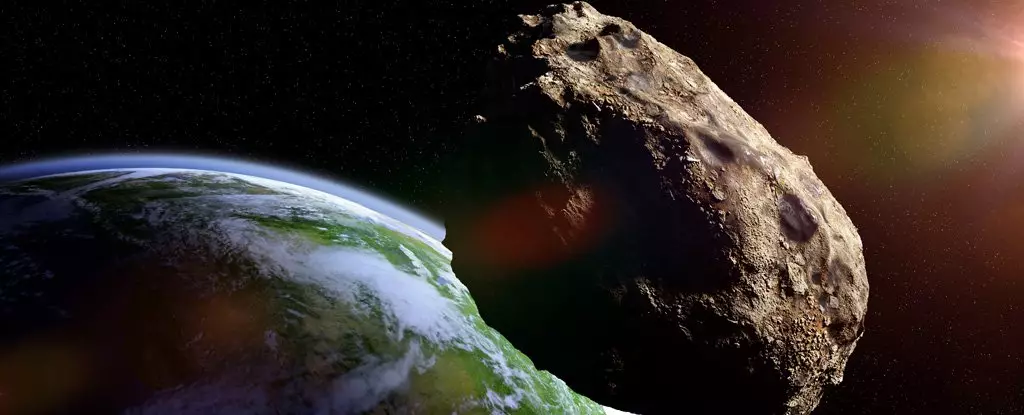Asteroids pose a formidable challenge for planetary defense, a concern magnified by the identification of potentially hazardous objects like Asteroid 2024 YR4, which has sparked alarm due to its projected trajectory toward Earth. This article delves into the implications of this discovery, the current state of monitoring efforts, and the broader framework for planetary defense.
Asteroid 2024 YR4 has captured the attention of global space agencies due to a startling 1 in 83 chance of impacting Earth within the next eight years. Officially flagged by the International Asteroid Warning Network (IAWN), the asteroid is expected to make a close approach on December 22, 2032. David Rankin, an engineer from the Catalina Sky Survey, described this scenario as one of the highest probabilities ever recorded for a sizeable asteroid. Despite this alarming statistic, most experts currently agree that a near miss is the most likely outcome. However, the mere possibility of impact emphasizes the need for heightened vigilance and preparedness.
The critical first step in the global response to this threat is to enhance observational capabilities. The IAWN has initiated a robust international monitoring strategy aimed at accumulating additional data to refine the asteroid’s path and characteristics. As astronomer Colin Snodgrass articulated, the priority lies in ruling out the possibility of impact through further observations. Should these observations indicate a continued risk, agencies will need to engage in detailed analyses and create more sophisticated reconnaissance strategies. This iterative process underscores the importance of thorough data collection in determining the asteroid’s trajectory.
Asteroid 2024 YR4 was initially identified through the efforts of the Asteroid Terrestrial-impact Last Alert System (ATLAS), a network of telescopes dedicated to spotting potential threats. The asteroid was first detected in December 2024 in Río Hurtado, Chile. Its estimated size ranges from 40 to 100 meters, which, while not globally catastrophic, could cause significant regional devastation. Experts estimate that an impact could affect areas extending up to 50 kilometers from the strike zone.
Although the asteroid’s exact impact location remains impossible to predict, various regions—including the eastern Pacific, northern South America, Africa, and South Asia—have been identified as possible targets. The unpredictability of this hazard underscores the need for international cooperation and awareness, as the consequences of an asteroid impact could have far-reaching implications both locally and globally.
Despite the approximately 1 percent risk assessed by agencies like NASA and the European Space Agency, caution is warranted. The Torino Scale, which measures the potential danger posed by near-Earth objects, ranks 2024 YR4 at a level 3, urging further scrutiny. Only one asteroid, Apophis, has ever garnered a higher ranking, serving as a historical reference point that illustrates the often transient nature of danger posed by asteroids as more data becomes available.
Asteroid risk assessments often fluctuate as new data becomes available. In the initial stages of detection, the trajectory risk corridor tends to widen, creating the illusion of greater danger. However, as observational data accumulate, the asteroid’s path can be predicted with increasing accuracy, usually resulting in a reduction of the perceived threat. Currently, 2024 YR4 is particularly challenging to track due to its elongated orbit and its movement away from Earth, resulting in a broad area of uncertainty regarding its path.
Currently, plans are being discussed among the Space Mission Planning Advisory Group. These meetings will explore the next steps, including potential real-time strategies should the asteroid’s risk remain above 1 percent. Options might include intervention strategies similar to NASA’s recent DART mission, which demonstrated that targeted asteroid deflection is possible with existing technology.
Asteroid 2024 YR4’s detection has reignited interest in the field of planetary defense, emphasizing both the potential threats we face and our capacity for response. The situation calls for global collaboration, advanced technology, and rigorous data collection to assess a risk which, while currently minor, demands our attention. The path forward is uncertain, but with sustained vigilance, preparedness, and innovation, we can hone our ability to protect our planet and mitigate potentially disastrous impacts from cosmic threats. The stakes have never been higher, reminding us that our survival may depend on our collective efforts to monitor and respond to the unknowns of space.

